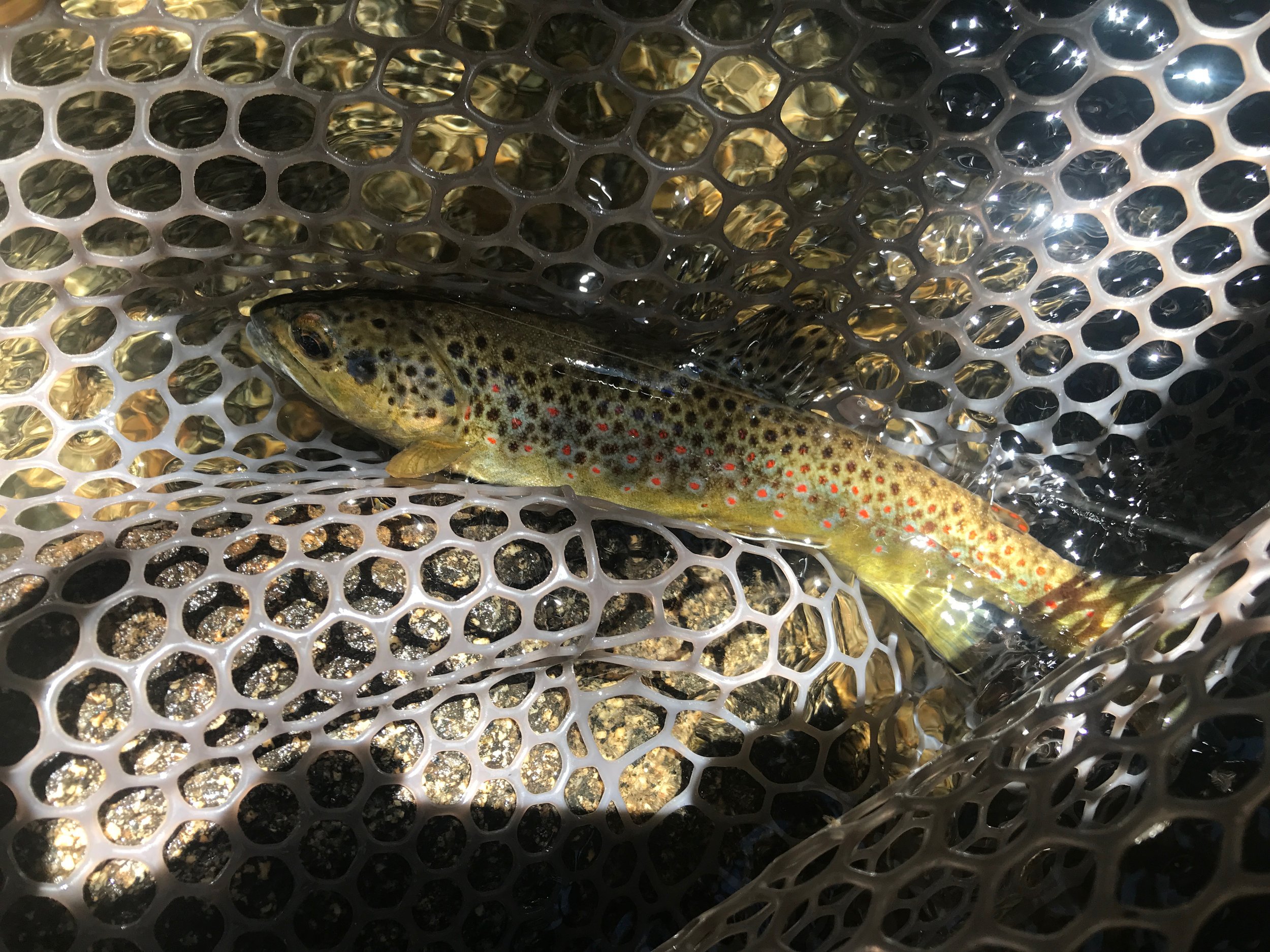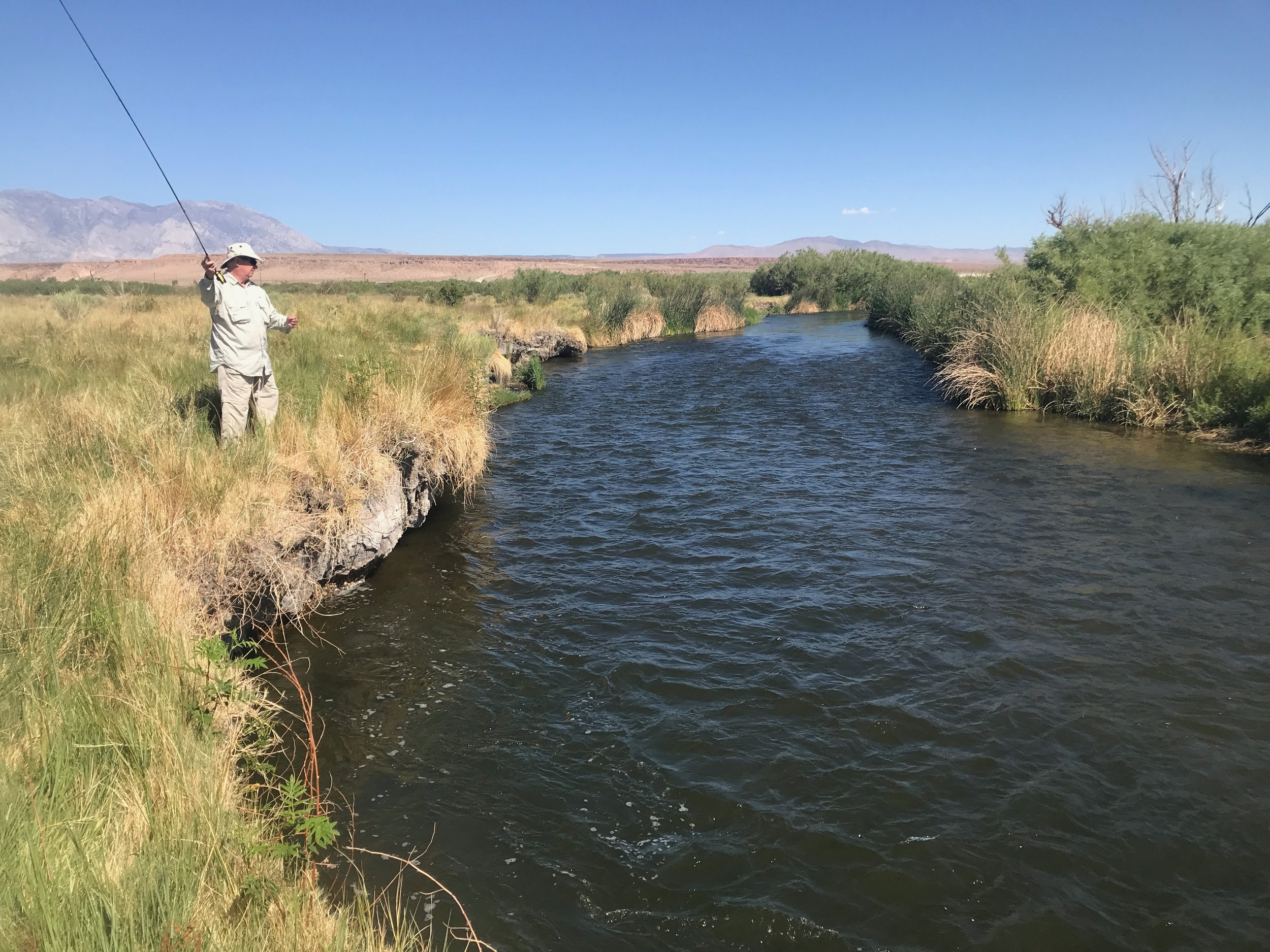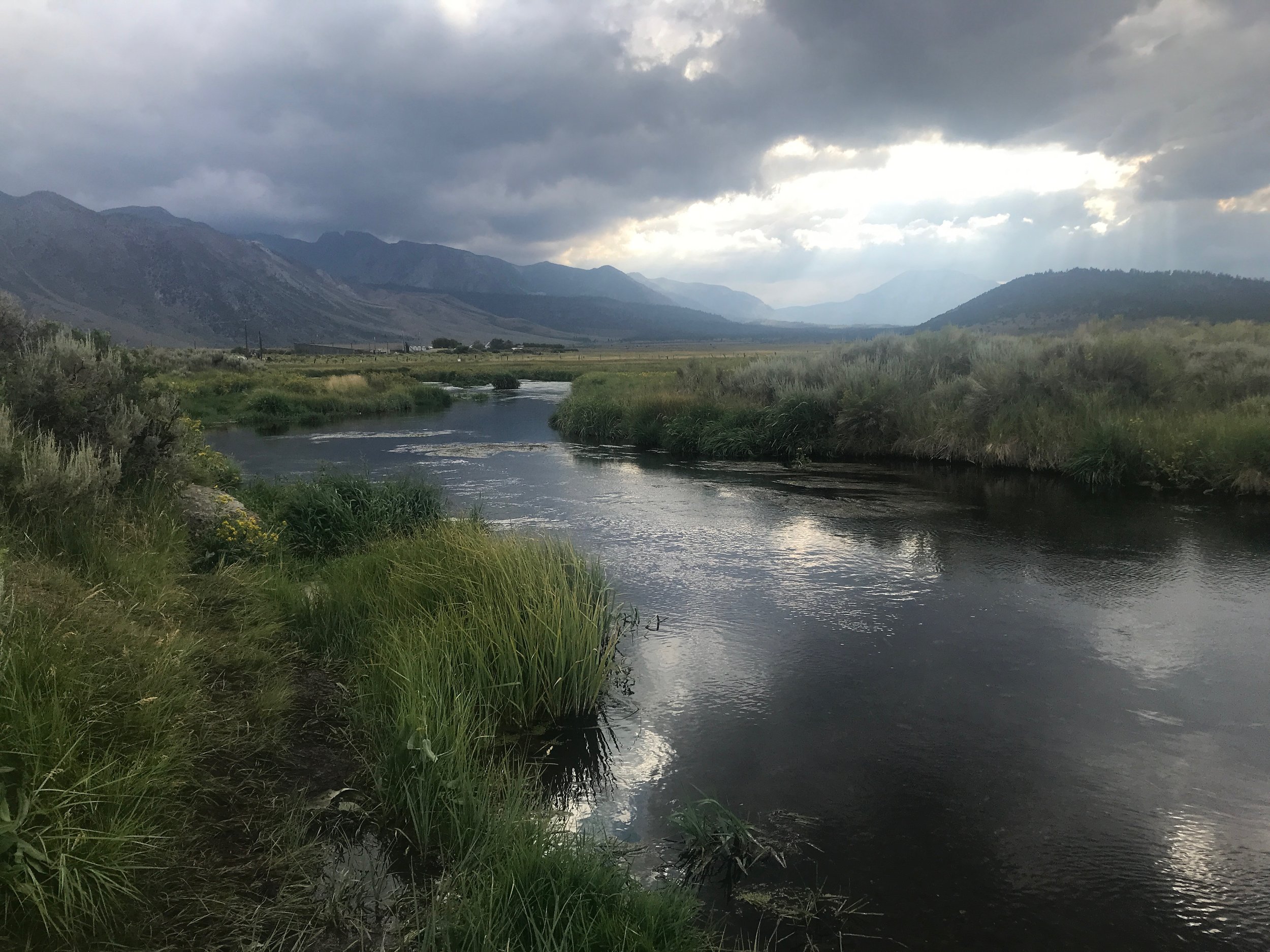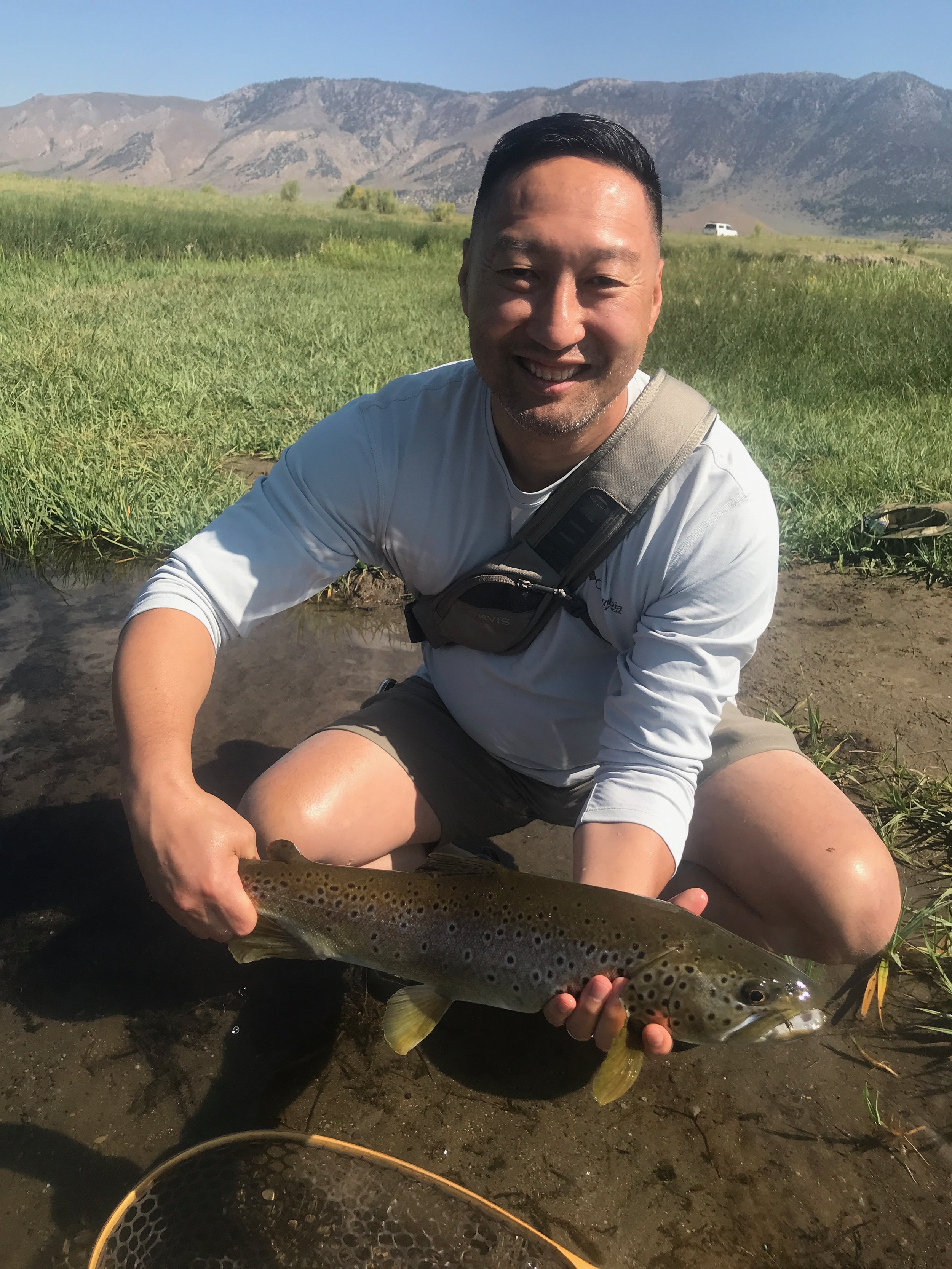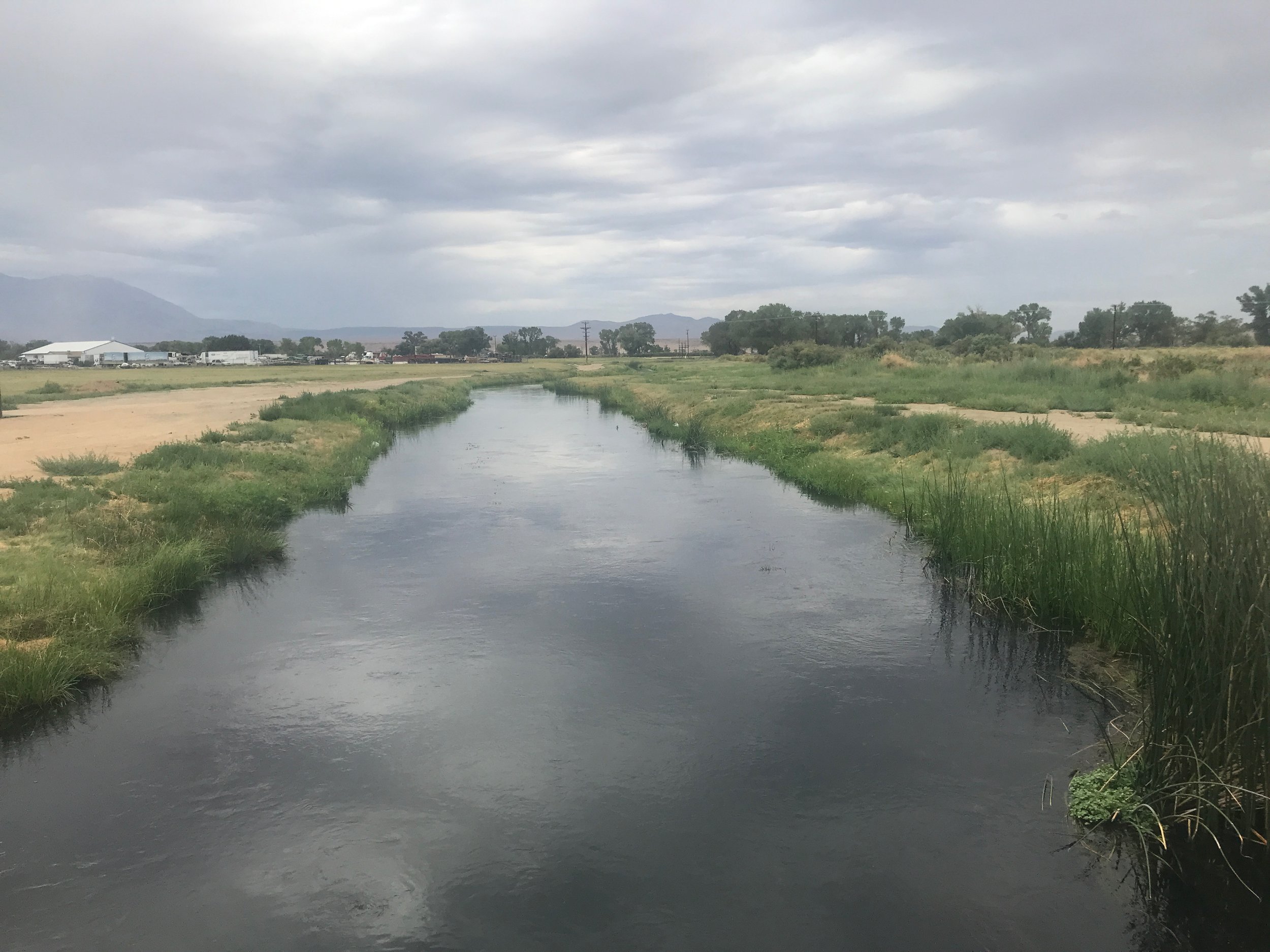I feel like the summer doldrums are here. But I’m still finding fish to catch in a number of Eastern Sierra Waters. Owens Valley waters have been showing signs of heat by noon and I quit fishing them and head up the hill to fish one of the many freestone streams that drain the mountains of the Eastern Sierra. This past week has seen lots of cloud cover in the afternoons in the upper altitude areas like Mammoth and the upper Owens River. Hoppers are starting to show in a few waters, but so far in not enough numbers to bring the trout to the surface.
Afternoon showers have cooled off the rivers allowing fly fishers to fly fish all day without worry about the streams water temperature.
Freestone Streams:
Rock Creek:
Dry flies or dry and droppers are the perfect way to fly fish freestone streams like Rock Creek. Your favorite dry fly will produce lots of fish if fished on a drag free drift. My three favorite dry flies for opportunistic feeding trout are Adams parachutes in size 14 or 16, elk hair caddis in size 14 or 16, and Royal Wulff’s in size 12 and 14. All these flies are very visible on the water to the angler and the trout. For nymphs I like fishing with Prince nymphs in size 14 or 16, bead head flash back gold ribbed hare’s ears in sizes 14 and 16, and bead head flash back pheasant tail nymphs in size 16 and 18.
Wild brown trout will readily take a dry fly or a nymph when fished in the pocket water that they inhabit in Rock Creek.
Bishop Creek
South Fork:
The key to fishing the south fork is to find places that you can access and fly fish the creek. A lot of time this requires the fly fisher to bush whack his way around the creek. It is impossible to get an aerialized cast in a lot of the creek. I dabble or roll cast to get the fly into the spots that I think is inhabited by the trout. I’ve been successful with Adams parachutes and bead head flash back gold ribbed hare’s ears. These flies are producing brown trout and brook trout.
Fishing a dry and dropper in the pocket water in Bishop Creek produces wild brown trout, rainbow trout and brook trout.
Lower Owens River:
Wild Trout Section:
There is a voluntary Hoot Owl in effect on the lower Owens River and most Owens Valley trout streams. A hoot Owl is fishing the trout stream when you can hear the owls hooting. This means fly fishing early and late in the day. This water needs to be temperature monitored as the water temps have been exceeding 70 degrees in the afternoon. Euro nymphing in the mornings has been productive with gold ribbed hare’s ears, stoner nymphs, Butano nymphs, brown quilldigons, and hot spot pheasant tail nymphs. By noon the water is approaching temperatures unsafe for catch and release fly fishing and the air temperatures are hot enough to get me off the water. Time for me to find lunch or head up high to fly fish one of the freestone creeks.
With a voluntary hoot howl in effect fly fishers on the lower Owens River need to be fishing early and late in the day.
Hot Creek:
Interpretive Site:
Trico mayflies, blues wing olive mayflies, and gray bodied caddis are hatching from morning to early afternoon. Knowing which insect and which stage of the insect the trout is feeding on is imperative to success on the creek. The trico mayflies are hatching in the morning. The blue wing olive overlap the end of the trico hatch and are hatching mid-morning. The caddis are the last to hatch and are over by early afternoon.
Afternoon storms cleared fly fishers of off Hot Creek offering fly fishers who wanderer out to the creek the opportunity to fly fish this crowded section by themselves.
Hot Creek:
Canyon Section:
Fishing in the canyon is at its toughest this time of year as the weed beds are at full maturity. The key to fishing in this area is to get your flies to drift in the tiny channels or open holes around the weed beds. This is easier said than done. Persistence with your casts will eventually get a drift that will produce a trout. I fish both nymphs and dries at this time of the year. It’s easier to drift a dry through the tiny windows of opportunity in the weed beds. Trico mayflies, blue wing olive mayflies, and caddis are hatching and the trout are feeding on them.
Nathan Seaman from Ontario learned to nymph fish under an indicator and landed a 22 inch brown trout.
Upper Owens River:
Above Benton Crossing Bridge:
Cloud cover and afternoon rainstorms have kept the rivers water temperature in the fishable range. Up to 67 degree fishing is fine. From 67 to 69 anglers should leave trout in the water, land trout as quickly as possible, and release them as soon as the trout is recovered from the strain of being landed. At 70 degrees and above fly fishers should quit fly fishing and find a cooler water to go fly fish. I like to head up in the mountains in the afternoons to fish the opportunistic feeding trout that inhabit the Eastern Sierra creeks. Morning hatches of trico mayflies and caddis are keeping the trout active. Evening hatches of mayflies and caddis have the trout active once again. Starting to see a few hoppers bouncing around on the banks, but the trout are not reacting to them yet.
Cloudy and rainy days means that fly fishers can fish the canal all day long.
Bishop Creek Canal:
Behind the Ford Dealer:
Early mornings are the best times to be on the water. Nymph fishing continues to be the most productive method of fly fishing the canal. I’ve been using my Euro rig with green/gold wire Prince nymphs, stoner nymphs, and gold ribbed hare’s ears. Fishing under an indicator with bead head flash back gold ribbed hare’s ears and bead head flash back pheasant tail nymphs have been producing wild brown trout to 12 Inches.


